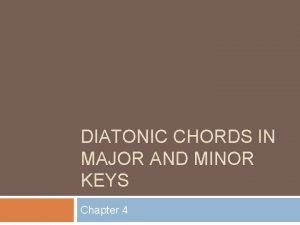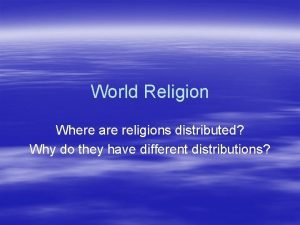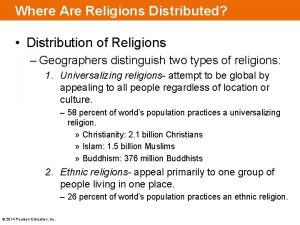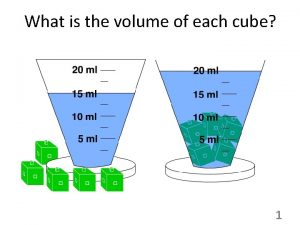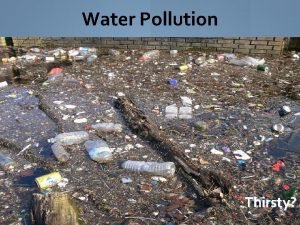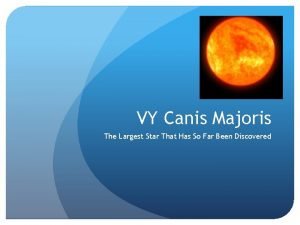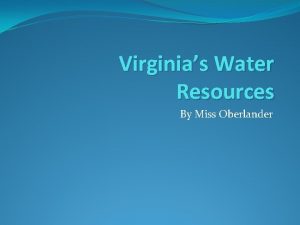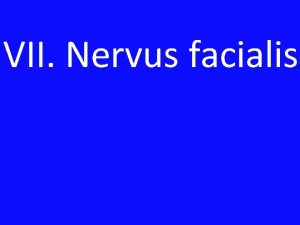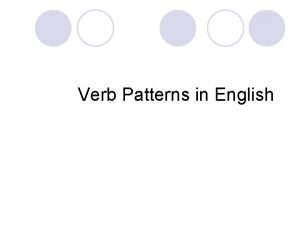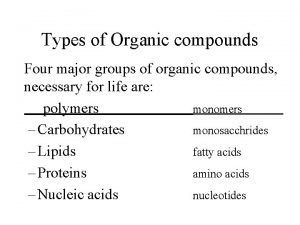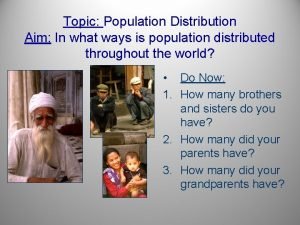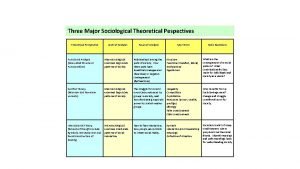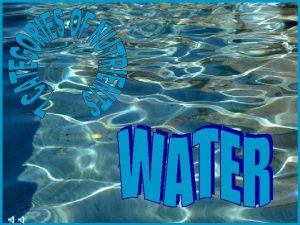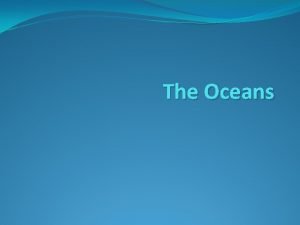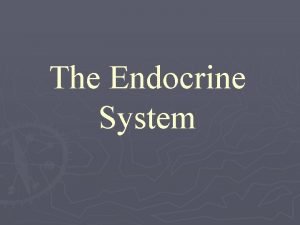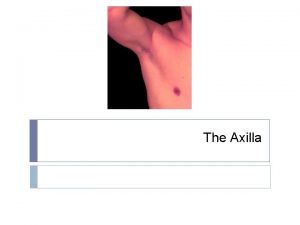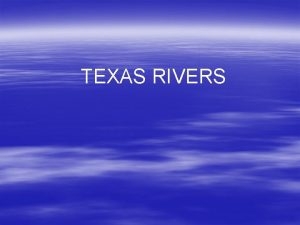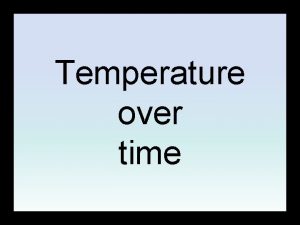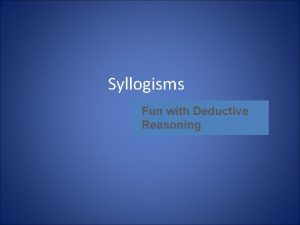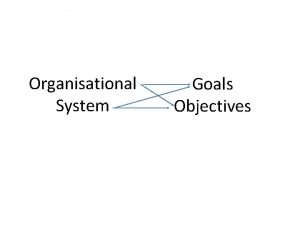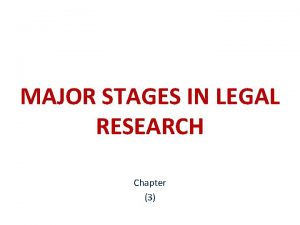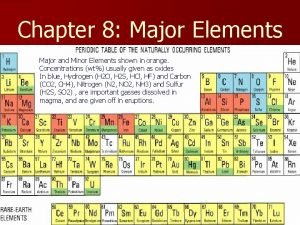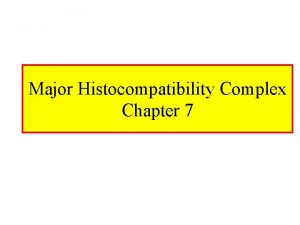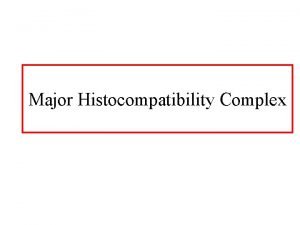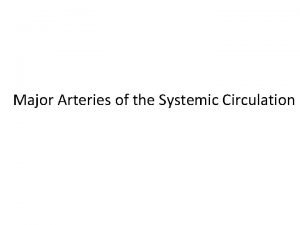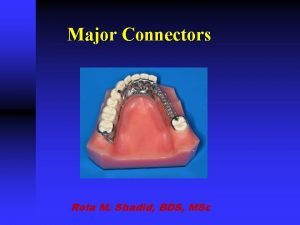Chapter 6 Goals Major Goals of Chapter 6


























![[Na]1+ • • • Cl • • • [ Ionic substances Supplemental packet page [Na]1+ • • • Cl • • • [ Ionic substances Supplemental packet page](https://slidetodoc.com/presentation_image_h/8604ce0aff77040037e7b57d2599f88e/image-27.jpg)















- Slides: 42

Chapter 6 Goals Major Goals of Chapter 6: 1. Identify the difference between ionic (CH 5) & covalent (CH 6) substances. 2. Learn the rules for naming covalent substances using prefixes and —ide endings. 3. Learn and apply the rules for drawing correct Lewis dot structures. 4. Apply the concept of electronegativity in identifying bond dipoles. 5. Apply VSEPR theory to determine the shapes of ideal and nonideal geometries. 6. Determine whether a molecule is polar or nonpolar from its geometry. Before viewing this powerpoint, read the Chapter 6 Review: 6. 1 Names & Formulas of Covalent Compounds 6. 2 Covalent Bonds & Electron-Dot Formulas 6. 3 Multiple Covalent Bonds & Resonance 6. 4. Shapes of Molecules & Ions (VSEPR Theory) 6. 5 Polarity Molecules

Section 6. 1 - Names & Formulas of Covalent Compounds 1) Unlike ionic salts, covalent compounds need prefixes in their name 2) Covalent compounds consist of nonmetals (e. g. , F O N Cl Br I S C H)

Covalent Compounds carbon dioxide dihydrogen sulfide (g) as an acid in aqueous solution hydrosulfuric acid (aq) tetracarbon octahydride disulfur hexabromide

Covalent Compounds sulfur dioxide (smog) dinitrogen oxide better known as nitrous oxide laughing gas diphosphorus pentaoxide pentaphosphorus decaoxide

Covalent Compounds nitrogen triiodide dinitrogen tetraoxide phosphorus pentafluoride triarsenic heptaoxide

Acids as a pure compound hydrogen listed first hydrogens Acids named as a pure compound as a gas hydrogen perchlorate dihydrogen sulfate hydrogen chloride hydrogen nitrate trihydrogen phosphate hydrogen acetate Please Note: An acid has hydrogen listed first in its chemical formula.

Acids as an aqueous solution Acids named as a pure compound hydrogen perchlorate dihydrogen sulfate hydrogen chloride hydrogen nitrate trihydrogen phosphate hydrogen acetate Acids named as an aqueous solution perchloric acid sulfuric acid hydrochloric acid nitric acid phosphoric acid acetic acid Note: An acid dissolved in water (aqueous) has a new but familiar name.

Section 6. 2 - Covalent Bonds & Electron-Dot Formulas 1) Unlike ionic salts, covalent compounds share electrons between atoms to achieve extra stability associated with 8 valence electrons. 2) Covalent compounds consist of nonmetals (e. g. , F O N Cl Br I S C H) Bohr Models mutual sharing of electrons Lewis dot structures

Section 6. 2 - Covalent Bonds & Electron-Dot Formulas Note: Hydrogen wants a duet and the other nonmetals want an “octet. ”

6. 3 Multiple Covalent Bonds & Resonance Note: resonance means the movement of electrons

Please identify the atoms represented by each Bohr model Carbon will bond to how many hydrogens in order to achieve an “octet? ” 4 H H H C N O

Carbon in group four always wants to make four bonds. H C Nitrogen in group five wants to bond to three hydrogens; nitrogen gains extra stability associated with 8 valence electrons in its outermost shell. H N Oxygen in group six wants to bond to two hydrogens; oxygen gains extra stability associated with 8 valence electrons in its outermost shell. H O

Please note the addition of the red colored valence (outermost) electron by the incoming hydrogen atom which will be shared by both atoms. Covalent Bonding (sharing electrons to achieve noble gas electron configuration) nonmetals bond to hydrogen to achieve noble gas e- configuration of the noble gas in their period (row) H • Addition of hydrogen Achieving an OCTET valence H • • H CH 4 methane gas H • • H NH 3 ammonia gas H • • H H 2 O water molecules of nonmetals hydrides HF hydrogen fluoride

Please note a single bond (–) represents two electrons being covalently shared chemically between two nonmetal atoms H H C Note nonbonded electron pairs H N Note nonbonded electron pairs H C H O H H

6. 3 Multiple Covalent Bonds & Resonance 1. Carbon always will have four bonds to it. For any organic molecule: alanine (an alpha amino acid) a. nitrogen will have three bonds to it. b. oxygen will have two bonds to it. c. hydrogen will ALWAYS have one bond Compare the above bonding modes to the observed bonding in alanine. Organic molecules have carbon listed first in their chemical formulas

6. 3 Multiple Covalent Bonds & Resonance

6. 3 Multiple Covalent Bonds & Resonance Supplemental packet page 66 Lewis Dot Structures Dr. Gergens - SD Mesa College

Things to keep in mind when drawing Lewis structure 1. Always count valence electrons 2. Know the preferred number of bonds to these elements CNOFH 4 3 211 3. N O , these elements may have (2) (1) a variable number of bonds (4) (3) 4. If the substance has hydrogen list first in its formula: a. the substance is characterized as an acid, and b. the H will be bound to oxygen in the substance’s structure 5. Use, F O N Cl Br I S C H for determining bond polarity

6. 3 Multiple Covalent Bonds & Resonance. Supplemental packet page 66 Here are the rules for drawing Lewis Dot structures. Organic molecules have carbon listed first in their chemical formulas

6. 3 Multiple Covalent Bonds & Resonance Note: the 1+ charge means you are “ 1 electron short; ” must subtract 1.

6. 3 Multiple Covalent Bonds & Resonance Note: the 1 - charge means you have “ 1 electron extra; ” must add 1.

6. 3 Multiple Covalent Bonds & Resonance Note: Carbon always wants four bonds. Its neighboring O atoms will share with it their electrons.

6. 3 Multiple Covalent Bonds & Resonance Note: Neighboring nonmetal atoms are willing to share their electrons so that every atom will achieve a full-octet.

Section 6. 4 Shapes of Molecules & Ions (VSEPR Theory) The shape of a molecule is determined from its Lewis dot structure and the arrangement of all atoms and nonbonded electrons pairs around each atom. Valence Shell Electron Pair Repulsions means that 1) The theory only considers valence electrons in the outermost (valence) shell in a Lewis Dot structure. 2) Electrons like to pair up and repel. 3) Electrons are negatively charge. Electron pairs and atoms move as far away from each other as possible to achieve a geometry where there is the least amount of unfavorable repulsion between electrons & atoms. 4) VSEPR is an empirical theory based purely on common sense. Another empirical theory is, “All birds have feathers, thus all animals with feathers must be birds. ”

Section 6. 4 Shapes of Molecules & Ions (VSEPR Theory) Supplemental packet page 70 Molecular geometry is determined by VSEPR Theory

Supplemental packet page 68 valence shell electron pair repulsion Ideal bonding for carbon = Four bonds to carbon = Four bonding modes 109. 5 tetrahedral 120 120 trigonal planar 180 linear Ideal bonding angles for carbon 107. 5 pyramidal or trigonal pyramid 104. 5 bent q<120 bent Bond angles are less than ideal angle Electron pair occupies a lot of space & is held close to nucleus of central atom
![Na1 Cl Ionic substances Supplemental packet page [Na]1+ • • • Cl • • • [ Ionic substances Supplemental packet page](https://slidetodoc.com/presentation_image_h/8604ce0aff77040037e7b57d2599f88e/image-27.jpg)
[Na]1+ • • • Cl • • • [ Ionic substances Supplemental packet page 64 ]1 - molecules of nonmetals hydrides • • • • 1+ 2+ 3+ 4 - 3 - 2 - 11 2 3 4 3 2 1 • • •

Supplemental packet page 64 To these molecules, Add missing nonbonding pair of electrons

Section 6. 6 - Polarity of Molecules Molecular Polarity can only be evaluated if 1) A Lewis dot structure for a molecule is drawn correctly 2) bond dipoles are correctly located using FONCl. Br. ISCH and 3) the geometry (ideal or non-ideal) about each atom in the structure is correctly specified. 4) The thought process for evaluating molecular polarity is summarized on the concept map on the next slide

Supplemental packet page 66 A. Be able to draw Lewis dot structures B. molecules have ideal or non-ideal geometry C. electronegativity differences determines bond polarity D. Overall Molecular Geometry determines molecular polarity These ideas are described on the next two slides

Section 6. 6 - Bond of Polarity Supplemental packet page 65 Bond Polarity is all about UNEQUAL SHARING of electrons in a covalent bond. Our analysis of bond polarity will be based upon an electronegativity trend. The definition of electronegativity is, “the ability for atom to pull electrons toward itself in a covalent bond. ” This may cause an UNEQUAL SHARING of the electrons between atoms. An electronegativity trend, F O N Cl Br I S C H, can be used for determining bond polarity between two nonmetal atoms. Fluorine has been experimentally determine to be the most electronegative element of all the elements. It is small, has only two electron shells and has high effective nuclear charge. Memorize the trend and on the next slide will we see how to apply it in determining bond polarity. F O N Cl Br I S C H 1. The elements of F O N Cl Br I S C H are all nonmetals. 2. F is the most electronegative element, hydrogen is the least in this trend

Supplemental packet page 65 M + NM = ionic NM + NM = polar covalent M + NM = ionic NM + NM = slightly polar covalent NM + NM = pure covalent M + NM = ionic

Supplemental packet page 65 F O N Cl Br I S C H

The large difference in electronegativity between H—F requires that we draw in an arrow called a dipole. Large difference in electronegativity between H—F most polar bond F is more electronegative than H F O N Cl Br I S C H

between C—F very polar bond F O N Cl Br I S C H Little difference in electronegativity values produces a less polar bond Equal Sharing between identical atoms, H-H, C-C, F-F Equal sharing of electrons between two atoms produces a nonpolar bond

Molecular Substances (discrete units) • Molecular Substances and Bond Polarity – Ideal geometries are generally nonpolar (no electron pairs) – Non-ideal geometries are most often polar (electron pairs) NO Net Dipole Bond Dipoles Cancel ideal non-polar variable polarity BUT, these ideal geometries here are polar non-ideal ammonia non-ideal water gas polar These Molecules Have a Net Dipole

Symmetric versus Asymmetric Symmetrical arrangement Asymmetrical arrangement of polar bonds bond polarities cancel bond polarities don’t cancel NO Net Dipole Bond Dipoles ammonia water Cancel non-polar gas polar variable polarity These Molecules Have a Net Dipole

Supplemental packet page 68 Draw in bond dipole for each bond

Supplemental packet page 69 Find the molecules which have an unequal distribution of dipoles? An unequal distribution of dipoles will produce a polar molecule

Section 6. 6 - Polarity of Molecules Molecular Polarity & Solubility • The solubility of substance in water, a polar solvent, can be used as a gauge to determine whether a molecule is polar. “Like will dissolve Like. ” Thus if sugar dissolves in water, sugar must be polar. This common sense approach based on simple physical observations can be used to evaluate a substance’s polarity. It is summarized below: • Solubility (solute/solvent interactions) to gauge molecular polarity – “Like will dissolve Like” • • Polar solutes will have highest solubility in polar solvents Nonpolar solutes will have highest solubility in nonpolar solvents Polar solutes will have lowest solubility in nonpolar solvents Nonpolar solutes will have lowest solubility in polar solvents

Molecular substance solubility in water “Like dissolves Like ” to gauge Molecular Polarity • Sugar dissolves in water – Thus sugar molecules must be polar • Methanol CH 3 OH dissolves in water – Thus methanol molecules must be polar • Gasoline -(CH 2)- does not dissolve in water – Thus gasoline molecules must be NONPOLAR

A gasoline molecule is an organic hydrocarbon made of repeating –( CH 2 )– units �and non-polar; is no net dipole hydrocarbons are non-polar A gasoline hydrocarbon All dipoles cancel Organic molecules have carbon listed first in their chemical formulas
 Strategic goals tactical goals operational goals
Strategic goals tactical goals operational goals Strategic goals tactical goals operational goals
Strategic goals tactical goals operational goals General goals and specific goals
General goals and specific goals Motivation in consumer behaviour
Motivation in consumer behaviour Diatonic chords in major and minor keys
Diatonic chords in major and minor keys Labeling theory examples
Labeling theory examples Advantages and disadvantages of sociology
Advantages and disadvantages of sociology 3 major branches of christianity
3 major branches of christianity Major threats to biodiversity
Major threats to biodiversity Australia major natural resources
Australia major natural resources 3 major branches of christianity
3 major branches of christianity Which layer
Which layer Rpta major
Rpta major Villanova premed
Villanova premed Weakness of taba curriculum model
Weakness of taba curriculum model Examples of point source pollution
Examples of point source pollution Vy canis major
Vy canis major What are the three major watersheds in virginia
What are the three major watersheds in virginia Nucleus cochlearis
Nucleus cochlearis Verb pattern example
Verb pattern example Vegetation of canada
Vegetation of canada Uri aec
Uri aec Major engineering problems in urea production
Major engineering problems in urea production Biology major requirements stony brook
Biology major requirements stony brook Types of organic compound
Types of organic compound Population distribution
Population distribution Three theoretical perspectives in sociology
Three theoretical perspectives in sociology Major types of nutrients
Major types of nutrients Major us landforms
Major us landforms Major structural components of the english spelling system?
Major structural components of the english spelling system? Ocean floor features
Ocean floor features Muscles of the body
Muscles of the body Major henry rathbone
Major henry rathbone Linguistic refuge area
Linguistic refuge area Major endocrine glands male and female
Major endocrine glands male and female Chapter 16 endocrine system
Chapter 16 endocrine system Pulmonary circulation system
Pulmonary circulation system Axilla posterior
Axilla posterior River separates texas and mexico
River separates texas and mexico 3 major landforms in tennessee
3 major landforms in tennessee 5 major ice ages
5 major ice ages Major sea ports in syria
Major sea ports in syria Faulty syllogism
Faulty syllogism




